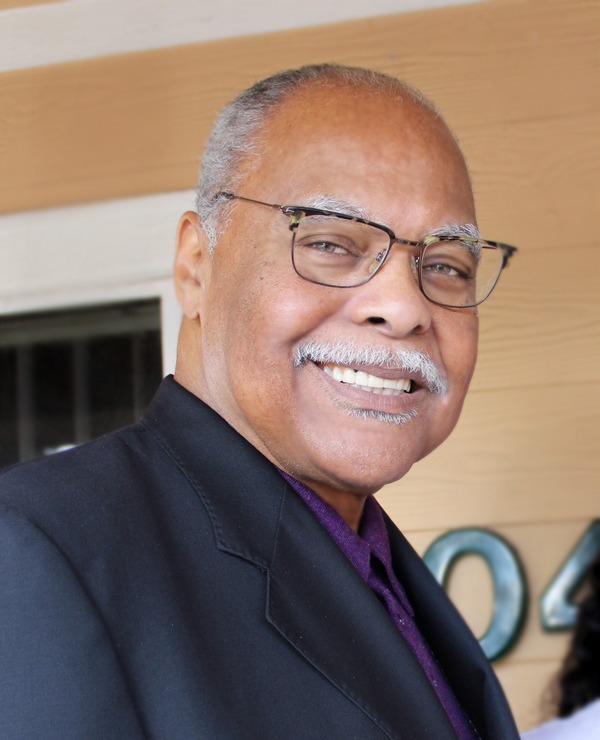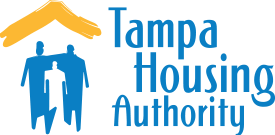Getting to Know Jerome Ryans the CEO Behind THA’s Success

Behind the doors of every public agency, there is a group of passionate and dedicated individuals working together to make things happen. At the most effective agencies, you often find strong leaders at the front of that pack, steering the ethos, voice, and actions of the organization.
Tampa Housing Authority is no exception. President and CEO Jerome D. Ryans would be the first to deflect praise, instead crediting his agency's success to his team and his community - and this is exactly the quality that makes him a stellar leader. The results Ryans have achieved revitalizing this agency and community amazes housing leaders across the country.
In today's post, we take a retrospective look at Ryans' career at the Tampa Housing Authority and what led him here. We focus on lessons learned and the components of effective public agency leadership, especially in the housing space. Our hope is to educate and inspire future leaders - both at Tampa Housing Authority and elsewhere.
Early Roots in Community Action & Public Housing
Ryans is not a native Floridian, although he has uniformly served communities in the south, and boasts a tenure of over 25 years at the Tampa Housing Authority. Hailing from Tennessee, Knoxville area, Ryans grew up in public housing.
He recounts, "We lived in a shotgun place - we had to go make our own fires in the morning, no central heat or air before we moved into public housing." He adds with positive resoluteness, "My family benefited from public housing. We never thought we were poor. We had a positive experience. Roof over our head, food on the table. You'd be surprised at the people who didn't live in public housing who wanted to move in. I always knew that people lived better than we did, but I felt like my essentials were met."
As a young adult, Ryans got involved in his community right away. After completing his master's degree in social work, with emphasis in administration, at the University of Tennessee, his first job was serving as a project design officer for the Memphis Regional Medical Program, which provided funding for healthcare facilities, such as neighborhood healthcare centers. He was able to both write grants and secure funding.
After that, he became the director of Big Brothers and Big Sisters of Memphis, providing mentors for kids in single-parent households. Next, he took on the challenge of becoming a division coordinator of health and public services for the Shelby County government in Memphis. Then, County Mayor Bill Morris asked Ryans to run the Community Action Agency as an executive director. Next, the late Bishop J. O. Patterson Jr. invited Ryans to join the Memphis city council as Staff Administrator. Jerome Ryans was the first Black administrative staff member of the council. Eventually, he became the Executive Director at Free the Children in Memphis, which examined the origins of poverty through census tracks - with the goal to develop responsive solutions to poverty in communities.
He first came into contact with public housing as a profession through an invitation to join the Memphis Housing Authority. The plan was for Ryans to assume the role of deputy executive director, presumably to learn from the mentorship of the executive director. However, as they say, "Luck is what happens when preparation meets opportunity." Something went amiss with the hiring of the original choice for executive director and, "Next thing I knew, I was being named as the executive director. I grew up in public housing, but I didn't feel like I knew enough to be the executive director."
Ryans is unabashed about his nascent beginnings; he does not pretend to have immediately soared as a new public housing director. Instead, he says, he threw himself into studying the foundations of his new profession.
In his words, "It's alphabet soup - housing authorities are full of them. I spent late nights learning the business. I wanted to make sure that I knew what I was doing." And he admits, "Of course I made a lot of mistakes. It's not unusual to make mistakes, I later learned. I was fortunate enough to become the executive director of Memphis HA. I stayed there several years. I got a chance to learn and travel a lot - spent time with other housing professionals."
Ryans credits his early managerial experience as a point of reference for his leadership at the Memphis Housing Authority, which helped him reorganize and lead his team to transform. "I faced the challenge of walking into an organization that was troubled, but I was fortunate to be surrounded by good people at the time." He also nods to the fact that this first experience gave him the chance to travel and talk to other housing authority professionals, seeing how agencies operate in other places.
At the time, Ryans was early in his career, and he wondered if public housing was the right field for him. He tried a couple other adjacent roles at other organizations. Then he was pulled from that to become the Regional Director of Action for George W. Bush's Thousand Points of Light; this was a multi-state and multi-organization program. Ryans still reflects on the connections and people power he grew there.
Yet Ryans eventually found himself drawn back to his first calling: public housing. He gave life a try in Birmingham, AL, at their housing authority, then returned to his old territory of Memphis to help lead them out of another trouble spot. But Ryans still wanted to find a housing authority and city where he could put down roots and make a larger difference.

Moving to Tampa Housing Authority
When an opportunity opened at the Tampa Housing Authority, he decided to interview for it. "I have always loved Florida," he smiles. "And the experiences that I accumulated before Tampa Housing Authority helped prepare me." He is now counting year 26, and he is still here.
Right away, Ryans realized he would need to make some major changes to help improve the lives of Tampa Housing residents - and the working conditions of his staff, so they could help residents.
He first focused on hiring a team that would last. "Longevity means a lot in this business," Ryans notes with gravity. "Most of my executive staff has been here 14-15 years. My COO, Leroy Moore, has been here as long as me."
Next, Ryans and his team had to make a decision about what to do with the major public housing developments in Tampa. "It didn't make sense to invest in old units anymore," Ryans explains. "So, we have torn down most of the major developments in this city and replaced them with mixed-income neighborhoods."
This led to a new style of public housing that acknowledged research and case studies finding that grouping people of the same income stifles social mobility, while mixing incomes helps create an upward spiral of mobility.
Additionally, Ryans is quick to note: "We've dropped the language of 'the projects.' It's all community." He even wishes that they could do away with the phrase "public housing," only because it carries such stigma that is difficult to shake. "The people who live in our communities work every day and pay taxes."
Ryans also saw a new direction for the housing authority to go. Instead of operating like a non-profit, he says, "We decided to get into the real estate development business." This meant leading his agency to become more agile and to form alliances not just with HUD, but with the state, city, and county to work out new developments - ones that can house residents of many different income levels, from Section 8 to market rate.
Many of the new developments also involve a mixture of retail and residential establishments, creating a pleasant, walking oasis for those who live there. "It doesn't make sense to build housing in the same way as the past. People ought to live together and support each other," Ryans opines. Though he acknowledges, "We haven't won everybody over - but we have won over the vast majority."
"Activist groups didn't want us to tear down public housing at first," he remarks. "But then they became our friends after they saw what we were doing." He also gives a nod to the city leadership and the agency's board leadership before listing a just a few of the many local organizations that have come to support the Tampa Housing Authority.
"We have a lot of social programs that we provide," he continues. "We strive to make those connections between housing, social services, education, and those sorts of practical services. You can't build a community without including those agencies and the individuals in the community."
He goes on to describe his agency's novel approach under his tenure. "We don't get a lot of money from HUD, but we take the money we do get and spread it out. We'll completely redevelop one scatter site, then another."
He affirms that this approach is working, as evidenced by the quality of life in the agency's buildings. "Most people who used to live in public housing are surprised at what they see at our developments. After moving to Encore, one resident told me 'I moved from the hood to Hollywood,' and smiled with pride. I knew exactly what he was saying, so that meant a lot to me."
However much Ryans celebrates Tampa Housing Authority's success, though, he is not resting on his laurels. He acknowledges there is still much work left to do. "It has taken us about 25 years to get to this point, and we're not finished yet. Housing is still a huge issue, here and nationwide. We still have thousands of families on the waiting list," he says. "We're about two-thirds up the mountain. We're working on our last major redevelopment right now."
Ryans also guides his agency with a simple, empathetic, and grounded philosophy: "I made a point of this early on: if you're not willing to move your family into one of your units, why would you move somebody else there? If I'm critical of that unit, why would I want to entertain somebody else moving there? It's not right. It's not the way to look at things. For us to be successful, we have to be willing to take on that responsibility."
Beacons of Hope: Encore & West River
The Encore and West River communities were redeveloped from dilapidated stereotypes of "the projects" to green-certified buildings and models of forward-thinking public housing.
"If I didn't tell you 'this is public housing,' you wouldn't know," Ryans proclaims. "These buildings house mixed-income residents and retail spots. It's a vibrant community that is safe."
Encore
The Encore redevelopment is composed of several different communities:
There are also several proposed private developments in the works.
Ella, the Encore senior community playfully named after Ella Fiztgerald, is a special point of pride for Ryans and his team. "Seniors live in a building with a nice pool, covered parking, a business room where they can go get their docs from time to time, a relaxation area, computer center, theater. We're happy to have created such a nice place for them." He adds with a laugh, "Our director of communications wants to retire there."
At The Reed, residents enjoy a lobby art gallery, their own movie theater, a community garden, and park-like courtyards. The Tempo features a whole host of amazing features, including an exhibit space, music rehearsal rooms, an internet cafe with Wi-Fi access and computers to use, a fitness center, and a pool with an outdoor theater. And The Trio offers many of those same amenities in addition to a resident library and billiard room.
Rose Lugo, Tampa Housing Authority's Director of Public Relations & Strategic Communications, commented, "His leadership has really set the bar for public housing nationwide. Housing authorities come here regularly to see what we've done and how we've done to see how they can replicate it. Somebody from Hawaii, after visiting one of our senior communities at Encore was moved to tears, saying that she wished she could provide that standard of living to seniors in her community."
West River
THA's West River redevelopment encompasses a broad range of towers, apartment buildings, and engaging retail spaces:
- Boulevard at West River Tower 1, Tower 2, Tower 3, and Tower 4 - completed in 2019, each of these towers contains 119 mid-rise, mixed-use, and mixed-income units, with a National Green Building Standards Silver Certification
- Canopy at West River Tower 1, Tower 2, Tower 3, and Tower 4 - scheduled to be completed in June 2025, these buildings will contain 384 all affordable housing units
- Manor West River - in development - a 360-unit multi-family, market rate dwelling
- Townhomes - in development - 68 townhomes
- Rome Yard - mixed market rate and affordable apartments and townhome dwellings, totaling 1,138 new residential units
- National Grocery Store - once construction is finished, Publix will be the walkable grocery shop for the West River development
Robles Park
Located near downtown Tampa and the Old Seminole historic district, the rebuilding of Robles Park is the redevelopment project that will culminate the long-range plan that THA has been executing since Ryans started.
While THA works on plans for construction for the new Robles Park, the agency relocation team will be hard at work getting current Robles Park residents into new housing, whether that is vacant units via Section 8 vouchers or assisting them with moving out of the Housing Authority completely. Ryans and the team have been pleased to see that quite a few landlords are willing to take in their residents.
The goal is to transform and expand Robles Park from 150 to more than 400 units of public housing with a variety of floorplans. The master plan also includes a vibrant community hub with modern services for residents and attractive retail spots. They are also striving to connect the Robles Park community to other parts of the city in a more walkable way. The agency is operating on a 10-year timeline for this large-scale construction project.
A New Building for THA
One action that evoked some criticism of Ryans in years past was the purchase of a new office building for the Tampa Housing Authority. Yet Ryans stands by his decision, because "I felt I owed a comfortable environment to my employees and the residents who visited our office." His peers seem to agree - the old building leaked when it rained had no parking on-site, and it felt crowded and unsafe to those who frequented it.
The agency watched the real estate market and decided to acquire its current headquarters building in 2008 during a downturn. This helped make the purchase on a tight budget, even with some renovations. The current agency office offers comfort, safety, and plenty of parking, and it resides in the thriving West Shore neighborhood near a large shopping center. It is also near the airport, which helps facilitate visits from other housing agency and government colleagues. Though the agency initially faced negative press for a few years after the purchase, it is now seen as a move that elevated the Tampa Housing Authority.
Lessons Learned Over the Years
While there are many lessons that Ryans could extol from his long career at THA, he boils down his agency culture to a few core philosophies.
Entrepreneurial
THA operates in an innovatively profitable fashion, enabling the agency to go above and beyond in their efforts to increase housing supply in Tampa. This directly supports the creation of affordable housing options in the community alleviating this core issue.
Community Engagement
Ryans and his team work to build relationships in the Tampa community, because not all capital comes down to dollars. Our strongest resource is our community, and we see this unfolding in gifts of land, tax support, and private collaborators.
Home Ownership
THA strives to open the door to affordable home ownership, not just affordable rentals. Our agency understands the true rootedness and sense of community that expands from owning property rather than renting it.

HIP Theory
Ryans is not slowing down, but once he retires, he hopes to leave a legacy of innovation combined with a work ethic based on the "HIP Theory," as he likes to call it. In Ryans words, "That stands for Honesty, Integrity, and Being Principled. If you embrace those 3 factors, you can go anywhere in this country." He goes on, "I've operated on these principles all my life, and I've received so many benefits from them. And if you work for me, you operate on these principles."



